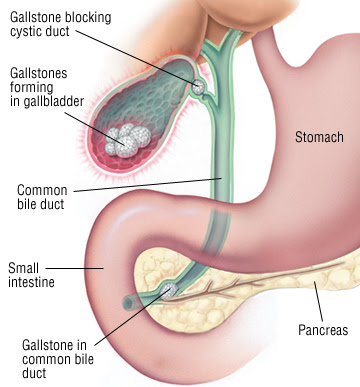Institute Of
Gastroenterology
Home » The Institute of Gastroenterology, Hepatobiliary Science & Transplantation » Surgical Gastroenterology » Day Care Laparoscopic Cholecystectomy
Day Care Laparoscopic Cholecystectomy
Laparoscopic cholecystectomy is a procedure that uses laparoscopic techniques to remove the gallbladder. During a laparoscopic process, tiny incisions up to half an inch are created and plastic tubing known as ports are inserted through these incisions. The laparoscope is then introduced through the opening that allows access to the internal of the patient. In camera the organ in the abdomen will transmit in television monitor. Your surgeon can view your gallbladder on a TV screen and perform the operation with tools inserted into other small incisions in your right upper abdomen. Your gallbladder is then taken out through one of the incisions.

Gallbladder:
The gallbladder is a pear-shaped organ that stays just below your liver on the upper right side of your abdomen. Your gallbladder collects and stores bile — a digestive fluid made in your liver.
Reason for performing cholecystectomy:
A cholecystectomy is most generally conducted to treat gallstones and the complications they cause. Your doctor may recommend a cholecystectomy if you have:
- Gallstones in the gallbladder (cholelithiasis)
- Gallstones in the bile duct (choledocholithiasis)
- Gallbladder inflammation (cholecystitis)
- Pancreas inflammation (pancreatitis) due to gallstones.
What are gallstones?
Gallstones aren’t really stones. They’re pieces of solid material that form in the gallbladder. Two main kinds of gallstones are
1. Cholesterol stones – these are usually yellow-green in color. They’re the most common kind, accounting for 80% of gallstones, and
2. Pigment stones – these stones are smaller and darker. They’re made up of bilirubin, which comes from bile, a fluid your liver makes and your gallbladder stores.
Cholecystectomy can be done in two ways. One is open cholecystectomy and the other is laparoscopic cholecystectomy. Open cholecystectomy involves a much wider incision while laparoscopic cholecystectomy involves minimal incision, which makes recovery quicker.
Benefits of daycare laparoscopic cholecystectomy:
With daycare laparoscopic cholecystectomy, you can go home the same day with just 8 hours of hospitalization required. This is the only hospital which offers daycare laparoscopic cholecystectomy treatment. The benefits are many, like less cost involved, reduced chance of bleeding, reduced risk of infection, shorter recovery time and many more.
- Open esophagectomy may be approached as transthoracic esophagectomy in which the part of the esophagus is eliminated through small incisions the chest and abdomen. It also can be approached as transhiatal esophagectomy in which incisions are made in the abdomen and neck. In a few tactics incisions are made through all three avenues, the abdomen, chest and neck.
- Minimally invasive esophagectomy is a system this is accomplished for small cancers, in which surgical instruments are inserted through small incisions and a scope is inserted to view inside the organs during the operation.

